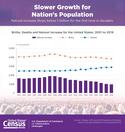The Coronavirus public health emergency is an existentialist crisis for many sectors of the U.S. economy and government services. The transit industry is one of the most impacted of all.
Transit began losing relevance decades prior to this event. Transit ridership and transportation market share have decreased even as operating costs and taxpayer subsidies increased. Expenditures for major capital projects have reached a billion dollars per mile and more while essential services for transportation-disadvantaged residents have withered away. read more »






















